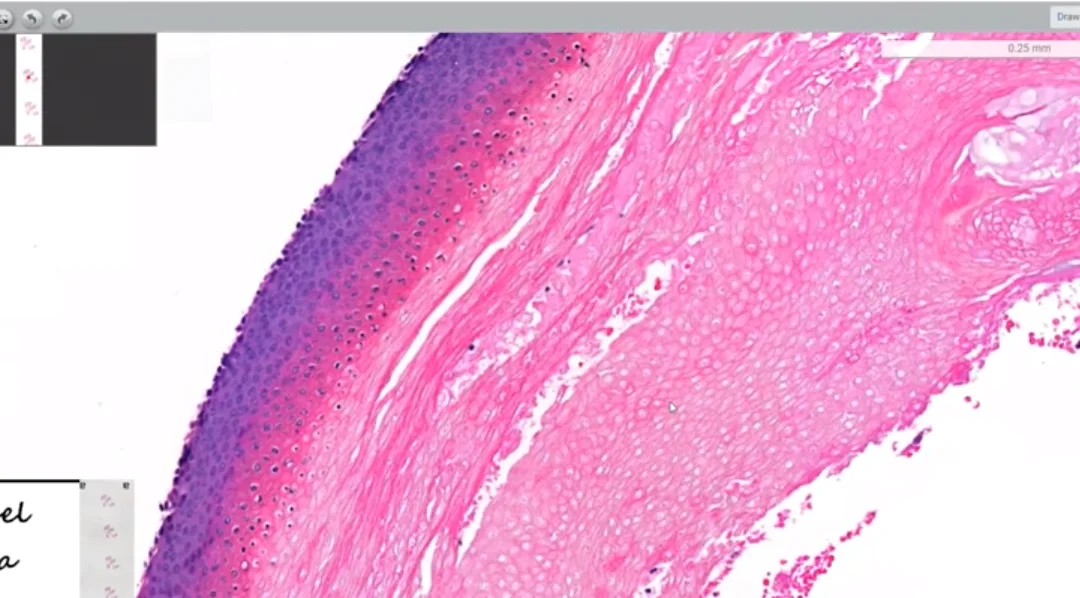Images shown are not intended to be used for the diagnosis or treatment of a disease or condition.
Often mistaken clinically for a more common skin growth like an epidermoid cyst, pilomatricoma is the focus of this Digital Dermatopathology Digest episode with Rajni Mandal, MD.
Pilomatricoma is a benign skin growth that typically occurs in children and young adults. Studies show that around 40 percent of cases happen to patients under age 10, and 60 percent of cases appear before age 20. Interestingly, research also shows girls are about 50 percent more likely to develop a pilomatricoma than boys.
This growth is associated with the somatic mutation of CTNNB1 in the hair matrix cell, which leads to increased beta-catenin (decreased cell adhesion) and uncontrolled cell division through the Wnt signaling pathway.
Pilomatricomas have very distinguishing pathologic features. “The keratin within the center of pilomatricoma is quite characteristic,” explains Mandal. “You can see multiple holes, or ghosts, of the keratinocyte nuclei.”
Although pilomatricomas aren’t painful or malignant in nature, they don’t resolve on their own. Dermatologists may recommend a skin biopsy to rule out cancer—and because they continue to grow and often appear on the head and neck, most patients opt to have them removed.
To learn more about pilomatricoma and other skin conditions, click here for more episodes of PathologyWatch’s Digital Dermatopathology Digest.

